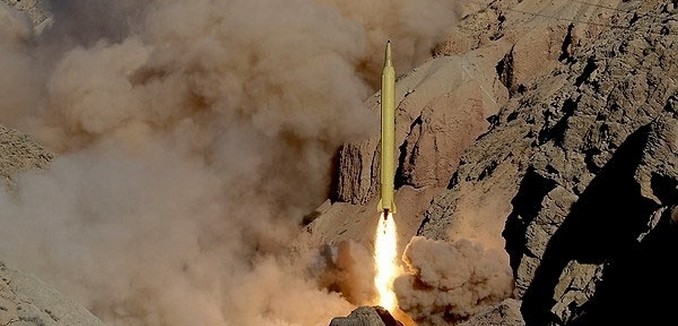Iran has improved its cyberwarfare capabilities and made significant progress in developing more advanced ballistic missiles in the year since the nuclear deal was reached, the U.S. Defense Department has determined.
Iran has “a substantial inventory of missiles capable of reaching targets throughout the region, including U.S. military bases and Israel,” the Pentagon stated in its annual report to Congress on Iran’s military capabilities, Bloomberg News reported on Tuesday. Furthermore, the Islamic Revolutionary Guard Corps (IRGC), which is tasked with exporting the Iranian revolution, has continued to hone its ability to “support and carry out” terrorist attacks.
Since the nuclear deal, Iran has “been testing to see what kind of activities it can get away with without jeopardizing sanctions relief and foreign investment,” Michael Eisenstadt, director of the Washington Institute for Near East Policy’s Military and Security Studies Program, wrote in a report (.pdf) last month. The Islamic Republic has “ramped up cyberspying operations against U.S. officials, journalists, and academics engaged in Iran policy, presumably for intelligence purposes, using email and social media contact lists harvested from the computer of detained Iranian-American businessman Siamak Namazi.” The Associated Press reported last December that Iranian hackers had been targeting the U.S. electric grid’s networks and stealing highly sensitive data since August 2013. Iran is also “increasingly turning the tools of computer espionage against both exiles abroad and potential dissidents at home,” Elias Groll wrote in Foreign Policy on Tuesday.
Iran has conducted several ballistic missile tests since the agreement was reached, most recently last month. The launch prior to that, in May, featured a missile with an estimated range of around 1,250 miles. Another launch, in March, included a missile with a range of around 870 miles that had the phrase “Israel must be wiped from the face of the earth” inscribed on it in Hebrew. United Nations Security Council Resolution 2231, which codified the nuclear deal, calls on Iran “not to undertake any activity related to ballistic missiles designed to be capable of delivering nuclear weapons, including launches using such ballistic missile technology.” The resolution also says that Iran must abide by previous Security Council resolutions, which placed restrictions on ballistic missile work until 2023.
The resolution “calls upon” Iran not to undertake activities related to ballistic missiles, whereas UNSC resolution 1929, which 2231 replaced, explicitly stated that Iran “shall not” engage in such activity. American and European Union officials wrote in a letter to the UN this past March that Iran’s ballistic missiles tests “were inconsistent with” and “in defiance of” of UNSC 2231, but did not call it a violation. However, while appearing before Congress last December, Ambassador Stephen Mull, the Obama administration’s lead coordinator for implementing the nuclear deal, said that such missile launches would “violate that part of the UN Security Council resolution.”
[Photo: Fars News ]




